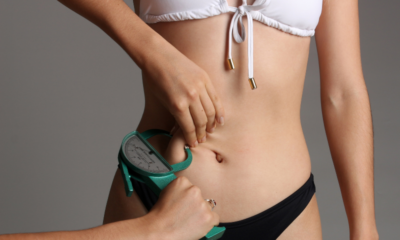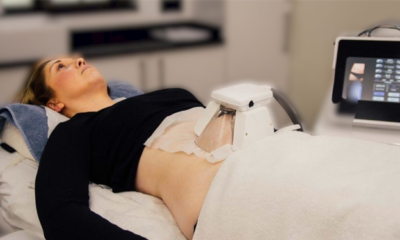Cosmetic Gynecology
Most Common Plastic Surgery For Females 2023
What is Female Plastic Surgery?
The many surgical treatments carried out on women to change or improve their physical appearance are referred to as female plastic surgery. Women who want to change specific elements of their body for aesthetic or practical reasons generally opt these treatments. How many are the most common plastic surgery for females? OR What are the most common plastic surgery procedures?.
Most common plastic surgery for females:
The most common plastic surgery procedures for women might differ based on elements including location and cultural influences. Personally I have seen the people who majority want to get the disadvantages of plastic surgery.
However, I can provide you a list of safest plastic surgery procedures that female patients frequently want in terms of plastic surgery:
(a) Breast Augmentation
Breast augmentation is utilising implants or fat transfer to increase the size and contour of the breasts. It is one of the most common plastic surgery for females in the world todays.
Things To Avoid After Breast Augmentation Plastic Surgery:
To guarantee appropriate recovery and reduce complications after breast augmentation surgery, there are a few items you should stay away from.
Strenuous activities:
After surgery, refrain from engaging in any strenuous physical activity, including heavy lifting, for at least four to six weeks. Push-ups and weightlifting are examples of activities that work your chest muscles.
Sleeping position:
After surgery, you must spend the first few weeks sleeping on your back. As it can put pressure on the breasts and interfere with the healing process, avoid sleeping on your stomach or side.
Underwire bras:
After breast augmentation, your surgeon will probably advise wearing a supportive surgical bra or sports bra. However, until your physician gives the all-clear, stay away from wearing underwired bras since they could obstruct the healing of your wounds.
Sun exposure:
The scars may darken and stand out more in direct sunshine. When you’re outside, cover your incision sites with clothing or apply high SPF sunscreen to prevent them from getting too much sun exposure.
(b) Rhinoplasty Surgery
Rhinoplasty, also known to as a “nose job,” is the process of reshaping or enlarging the nose to improve its look or resolve breathing issues.

Side Effects After Rhinoplasty Surgery:
The dangers and side effects of rhinoplasty are similar to those of any surgical surgery. Following rhinoplasty, the following typical adverse effects may manifest themselves:
Pain and discomfort:
After a rhinoplasty, some level of pain and discomfort is normal. To treat any discomfort experienced during the healing process, your surgeon may prescribe painkillers.
Nasal bleeding:
A certain amount of nose bleeding following rhinoplasty is typical. You’ll receive advice from your surgeon on how to control and reduce bleeding.
Infection:
After rhinoplasty, there is a small but present risk of infection. To reduce the risk of infection, your surgeon will provide post-operative care instructions.
Breathing difficulties:
Breathing issues can occasionally result with rhinoplasty due to transient or, very rarely, permanent abnormalities in nasal airflow. This occurs more frequently when cosmetic and functional changes are done together.
(c) Abdominoplasty
The procedure, sometimes known as a “tummy tuck,” involves tightening the abdominal muscles and removing extra skin and fat to give the stomach a flatter, more toned appearance

What Precautions Are Required After Abdominoplasty?
It’s crucial to follow a few guidelines after having an abdominoplasty, often known as a belly tuck, to ensure a quick recovery and maximise your outcomes. Following are some general principles:
Follow your surgeon’s instructions:
You will receive precise post-operative instructions from your surgeon that will suggest to your unique situation.
To encourage healthy recovery and reduce complications, it’s imperative to follow these recommendations.
Maintain proper hygiene:
To avoid infection, keep the area around the wound clean and dry. Follow the instructions for bathing and wound care will present by your surgeon.
Until your surgeon advises you to, avoid getting wet in hot tubs, swimming pools, or bathtubs.
Maintain a healthy diet:
Nutritionally sound eating is crucial for healing. Consume a diet that is well-balanced and rich in fruits, vegetables, lean proteins, and whole grains. Ample water consumption will keep you hydrated.
(d) Facelift:
A facelift is a surgical operation that tightens the skin on the face, smoothes out wrinkles, and helps you look younger again.

How Long Does Facelift Surgery Take?
The amount of time needed for a facelift surgery can vary based on a number of variables, including the particular procedures employed, the scope of the operation, and the surgeon’s level of experience.
A facelift procedure usually takes 2 to 4 hours to finish on average. However, it’s crucial to remember that this period of time may vary for each individual.
A facelift involves the removal of extra skin, tightening of underlying tissues, and repositioning of the skin in order to restore a more youthful appearance.
A facelift may be combined with other treatments, such as neck lifts or eyelid surgery, which could lengthen the whole surgery time.
(e) Breast Reduction:
This procedure tries to contour and reduce the size of the breasts in women who have heavy or abnormally big breasts that may be physically uncomfortable.
Common Problems After Breast Reduction Surgery:
During the recuperation time following breast reduction surgery, patients may face a number of frequent issues. It’s crucial to keep in mind that every patient will have a different experience, and not all patients will run into these problems.
The best course of action is to speak with a medical expert for specific recommendations. Following breast reduction surgery, the following potential issues may arise:
Pain and Discomfort: Following breast reduction surgery, some pain, discomfort, and edoema are typical.
Scarring: Breast reduction surgery leaves scars since incisions are made. Variables including individual recovery, surgical method, and incision site can affect how scars seem.
Bruising and Swelling: After breast reduction surgery, bruising and swelling are frequent and might last for a few weeks.
Sensational Changes: Following breast reduction surgery, some women may notice changes in their breast or nipple sensation.
It is gradient to highlight that before electing to undergo any operation, individuals should contact with qualified plastic surgeons to discuss their goals, expectations, and any potential dangers associated.
-

 Hymen Repair1 year ago
Hymen Repair1 year agoHymen Repair Surgery Cost in Islamabad, Rawalpindi, Lahore, Pakistan
-

 Breast Filler1 year ago
Breast Filler1 year agoBreast Filler Injections Before and After
-
Blog1 year ago
Female Virginity Hymen Repair Surgery, Hymenoplasty in Pakistan
-

 Fat Dissolving1 year ago
Fat Dissolving1 year agofat dissolving injections in Islamabad, Rawalpindi & Peshawar
-

 Breastfeeding1 year ago
Breastfeeding1 year agoSaggy Breast after Breastfeeding Solution in Rawalpindi, Lahore, Karachi, Dr Shafaq Ramay
-

 Breast Augmentation12 months ago
Breast Augmentation12 months agoBreast Augmentation in Lahore, Rawalpindi, Islamabad, Peshawar, Dr Shafaq Ramay
-

 Hymen Repair12 months ago
Hymen Repair12 months agoLaparoscopic Vaginoplasty in Lahore, Islamabad, Rawalpindi, Dr Shafaq Ramay
-

 Hymen Repair12 months ago
Hymen Repair12 months agoHymen Repair Surgeon in Pakistan, Hymenoplasty Surgery Price, Lahore
